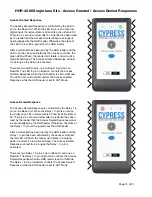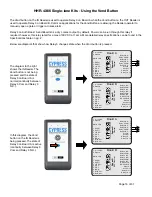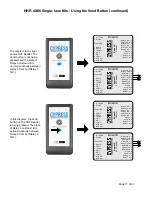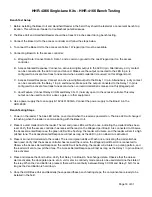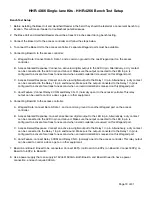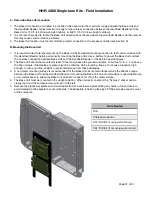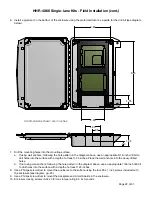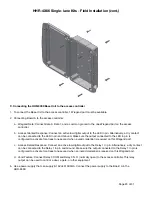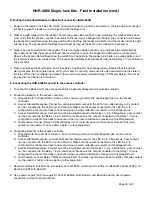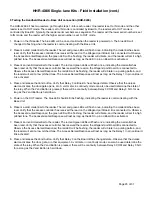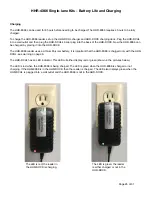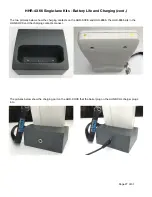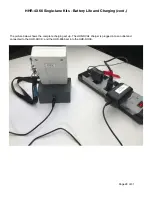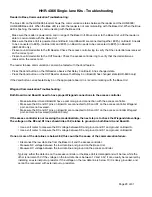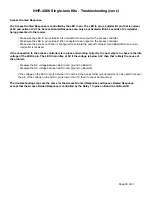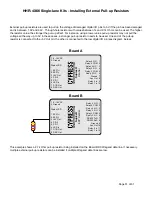
Page of
29
31
HHR-4X66 Single-lane Kits - Troubleshooting
Reader to Base Communication Troubleshooting:
The blue LED on the HHR-8066 reader shows the communication status between the reader and the HHR-8300/
HHR-8400 Base Unit. When the Blue LED is solid, the reader is not communicating with the Base Unit. When the Blue
LED is flashing, the reader is communicating with the Base Unit.
•
Make sure the reader is powered on and in range of the Base Unit. Move closer to the Base Unit, until the reader is
able to communicate with the Base Unit.
•
Make sure the Base Unit is powered on and Board A and Board B are connected together. EXP(+) on Board A needs
to be connected to EXP(+) on Board B, and EXP(-) on Board A needs to be connected to EXP(-) on Board B
(HHR-8400 only).
•
Present a valid credential to the IN Reader. Check the access controller log to verify that the credential was received
on the correct port.
•
Present a valid credential to the OUT Reader. Check the access controller log to verify that the credential was
received on the correct port.
The reader to base communication can also be tested with the Vend feature.
•
Press the Vend button on the IN Reader, observe that Relay 3 on Board A has changed state.
•
Press the Vend button on the OUT Reader, observe that Relay 3 on Board B has changed state (HHR-8400 only).
If the Vend button can activate Relay 3 on the appropriate board, it is is communicating with the Base Unit.
Wiegand Communication Troubleshooting:
Both Board A and Board B need to have proper Wiegand connections to the access controller.
•
Make sure Board A and Board B have a common ground connection with the access controller.
•
Make sure the D0 and D1 pins on Board A are connected to D0 and D1 on the access controller Wiegand
port, and are not reversed.
•
Make sure the D0 and D1 pins on Board B are connected to D0 and D1 on the access controller Wiegand
port, and are not reversed (HHR-8400 only).
If the access controller is not receiving the credential data, the next step is to check the Wiegand data voltage.
The voltage on the D0 and D1 lines should idle at 5V, relative to ground, on both Board A and Board B.
•
Use a volt meter to measure the DC voltage between D0 and ground, and D1 and ground on Board A.
•
Use a volt meter to measure the DC voltage between D0 and ground, and D1 and ground on Board B
If one or more of the data lines is below 4.5V, this could be the cause of the communication failure.
•
Disconnect the low data line from the Base Unit and the access controller.
•
Measure DC voltage between the low data line and ground on the Base Unit.
•
Measure DC voltage between the low data line and ground on the access controller.
Typically, either the data line on the access controller or the Base Unit is damaged and will be low, while the
other is normal at 5V. If the voltage on the low data line is between 1V and 4.4V, it can usually be recovered by
installing an external pull-up resistor. If the voltage on the low data line is below 1V, it is likely grounded, and
cannot be recovered with external pull-up resistors.

